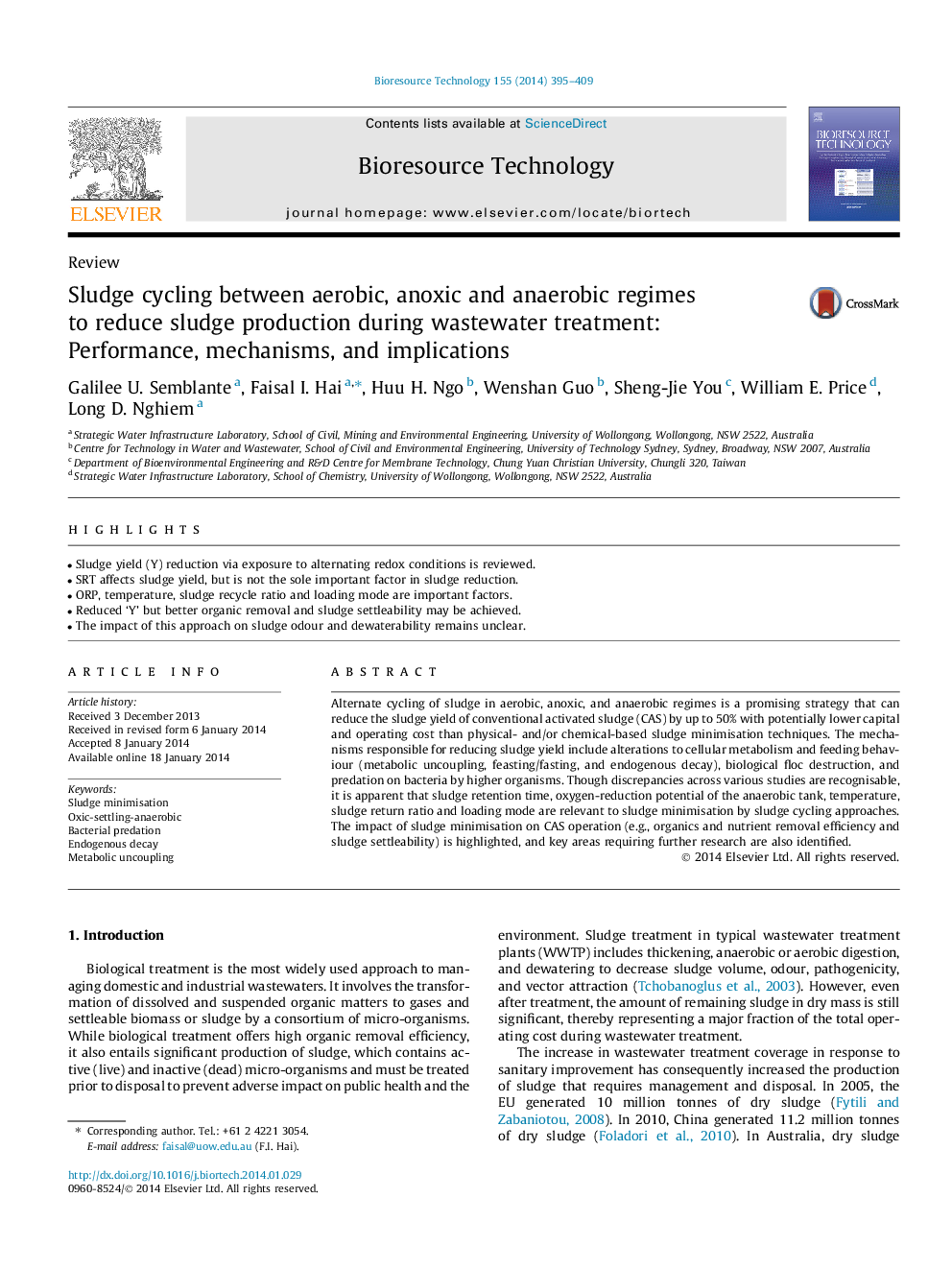| کد مقاله | کد نشریه | سال انتشار | مقاله انگلیسی | نسخه تمام متن |
|---|---|---|---|---|
| 680954 | 1459988 | 2014 | 15 صفحه PDF | دانلود رایگان |
• Sludge yield (Y) reduction via exposure to alternating redox conditions is reviewed.
• SRT affects sludge yield, but is not the sole important factor in sludge reduction.
• ORP, temperature, sludge recycle ratio and loading mode are important factors.
• Reduced ‘Y’ but better organic removal and sludge settleability may be achieved.
• The impact of this approach on sludge odour and dewaterability remains unclear.
Alternate cycling of sludge in aerobic, anoxic, and anaerobic regimes is a promising strategy that can reduce the sludge yield of conventional activated sludge (CAS) by up to 50% with potentially lower capital and operating cost than physical- and/or chemical-based sludge minimisation techniques. The mechanisms responsible for reducing sludge yield include alterations to cellular metabolism and feeding behaviour (metabolic uncoupling, feasting/fasting, and endogenous decay), biological floc destruction, and predation on bacteria by higher organisms. Though discrepancies across various studies are recognisable, it is apparent that sludge retention time, oxygen-reduction potential of the anaerobic tank, temperature, sludge return ratio and loading mode are relevant to sludge minimisation by sludge cycling approaches. The impact of sludge minimisation on CAS operation (e.g., organics and nutrient removal efficiency and sludge settleability) is highlighted, and key areas requiring further research are also identified.
Journal: Bioresource Technology - Volume 155, March 2014, Pages 395–409
